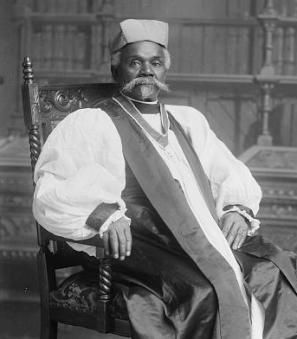"I am free now:" Ona Judge's Escape from Slavery and George Washington's Hunt to Get Her Back
It was shortly after dark when a knock sounded at the door of a small home in the free black neighborhood of Portsmouth, New Hampshire. A man stood outside, a servant of Senator John Langdon . He warned the young woman who answered the door that she must leave by midnight, or risk being dragged back to Mount Vernon and a life of slavery.
By now, most of us have encountered the major contradiction of the American Revolution: white men fighting for freedom from “slavery” to the British while holding a whole race of people in bondage themselves. As a Founding Father, George Washington stands out as both an icon of liberty and one of the richest slaveholders in American history. His complex and flawed moral compass is seen especially well through the story of Ona Judge.
Ona Maria Judge was born to enslaved seamstress Betty Davis and white indentured tailor Andrew Judge at Mount Vernon in 1773 or 1774. At the age of ten, Ona was moved into the Mansion House to serve as Martha Washington’s ladies’ maid. Her childhood was over and she became responsible for her mistress’s every need. Ona had to be available at a moment’s notice at all hours of the day or night to do whatever might be asked of her. And in 1790, at 16 years old, that meant moving away from her family to join the new President in the temporary capital of Philadelphia.
A few months after their arrival, while Washington was away on a visit to Mount Vernon, Attorney General Edmund Randolph visited Martha at the President’s House on High Street. He had come to warn her of the 1780 “Act for the Gradual Abolition of Slavery,” a piece of legislation that freed any person brought into Pennsylvania after six months of residence.1 Some of Randolph’s enslaved people had informed him that they planned to make use of the law which granted them their freedom, to the Attorney General’s mortification and rage. He wanted to ensure that the President would not run into the same problem. Washington’s secretary, Tobias Lear, immediately wrote to his employer.
In the city, Ona and the other six enslaved people who had come from Virginia were meeting more free black people than they had ever seen before and encountering the abolition movement which had taken hold in Pennsylvania. Washington worried that “the idea of freedom might be too great a temptation for them to resist” and that even if they did not run away, “if they conceived they had a right to it, [it might] make them insolent in a State of Slavery.”2 The atmosphere of black freedom might ruin his best slaves.
To avoid this, Washington devised a plan. Before six months were up, he would cycle the slaves out of the state so that the clock would have to restart. He instructed Lear to tell no one but Mrs. Washington: “I wish to have it accomplished under pretext that may deceive both [the slaves] and the Public.”3
As cunning as this idea was, it ignored a later piece of legislation by the Pennsylvania General Assembly. In 1788, a second Act had been passed to stem the “many evils and abuses arising from ill disposed persons” who were making use of loopholes in the original law. Loopholes like cycling slaves out of the state every six months.4
Whether out of a desire for peace or, more likely, a wish to keep the capital in Philadelphia instead of moving it to the Washington, D.C., the new city which was being laid out along the Potomac River, federal officials were not prosecuted for their flaunting of the law. So, for six years, Ona Judge and her fellow slaves were sent on contrived trips out of Philadelphia to Mount Vernon twice a year like clockwork.
In 1796, Eliza Custis, Martha’s granddaughter, announced her engagement to Thomas Law, an English merchant who planned to make a fortune speculating in DC land. As Eliza entered a marriage which would test her socially and emotionally, Martha could think of no better wedding present than her ladies’ maid, Ona Judge.
But the future Mrs. Law had a reputation for being stubborn, irritable, and difficult. Any personal servant would have to walk on eggshells in her presence. In addition, her husband-to-be already had three biracial children of dubious origin, making enslaved women wonder if they would be safe in his home. When Ona heard that she was to be given to the couple, she decided “she was determined never to be her slave.” She later remembered concluding “if I went back to Virginia, I should never get my liberty.”5
On the night of May 21, 1796, while the Washingtons dined, Ona made her escape.
When her absence was discovered, George and Martha were furious – and confused. They immediately placed a runaway ad in The Philadelphia Gazette, offering a $10 reward and informing readers that “there was no suspicion of her going off, nor no provocation to do so.” The ad also offered a description:
“ONEY JUDGE, a light mulatto girl, much freckled, with very black eyes and bushy black hair, she is of middle stature, slender, and delicately formed about 20 years of age.”6
Ona boarded a ship called the Nancy, a merchant ship captained by John Bowles which made frequent trips between New York, Philadelphia, and Ona’s destination, Portsmouth, New Hampshire. She spent four or five days aboard, traveling the 300 miles to freedom, and trying not to be noticed by anyone who might connect her to the Washingtons.7
Not much is known about the free people who aided Ona in her escape, but they were the ones who directed her to a vessel whose captain was either an abolitionist himself or at least willing to turn a blind eye to a black woman traveling alone. They were also the ones who carried her things to the ship ahead of time and who told her she would be safe among the people of Portsmouth. And they were right. While the laws surrounding slavery in New Hampshire were more ambiguous than those of Pennsylvania, the practice was already starting to disappear. By the time Ona arrived, slavery was quickly becoming a thing of the past in Portsmouth and, by 1805, the 2-3% of the population that was black were all free.8 Ona found a home among the small but strong free black community and began to look for work as a domestic servant. The labor would be hard but it was her best chance at survival.
Meanwhile, Washington was activating his network of political alliances to track down his lost property. Though the Fugitive Slave Law which he signed in 1793 allowed him to use force to bring Ona back, he preferred not to make a scene.9 Due to her position as Martha’s personal slave, many members of American society would have easily recognized Ona. And soon, that is exactly what happened. Elizabeth Langdon, daughter of Senator John Langdon and friend to Martha’s granddaughter, Nelly Custis, saw Ona in the streets of Portsmouth. When Ona avoided her, Elizabeth knew something was wrong. She informed her father and they immediately wrote to the Washingtons.
Now, with a solid lead, the President wrote to Secretary of the Treasury, Oliver Wolcott, Jr. Wolcott in turn contacted Joseph Whipple, customs collector in Portsmouth, and asked him to retrieve Ona quietly, so as not to “excite a mob or riot” - Washington’s reputation was of the utmost importance.10
Whipple began asking around, mentioning to friends and acquaintances (likely within hearing of their black servants) that he was looking for a maid. This was pure fabrication, but it accomplished his goal. Ona came to see him about the job.
During the “interview,” Whipple asked questions to verify her identity. He must have gone too far because Ona became suspicious and he had to come clean. He asked if she would return to Mount Vernon of her own free will, which he believed “would be a pleasing circumstance both to the President & his Lady.” According to a letter from Whipple to Wolcott, Ona “without hesitation declared her willingness to return...if she could be freed on [the Washingtons’] decease.”11 She agreed to board a ship leaving for Philadelphia on which Whipple had already secured her passage. The ship was delayed and Ona never boarded it. Whipple believed that some of her friends found out about the plan and convinced her not to go, but historians question whether she ever intended to leave Portsmouth at all – her agreement may have been a tactic to buy time and get away.12 Either way, it was just as well that she stayed; her attempts at negotiation had infuriated Washington. Her suggestion of emancipation upon his death “was totally inadmissible” and “it would neither be politic or just, to reward unfaithfulness with a premature preference.”13
In 1797, Ona became Mrs. Staines, marrying a free black sailor named John who she met soon after her arrival in New Hampshire. The next year, she gave birth to her first child, a girl named Eliza. But her happy new life was not to last long. In 1799, she was home alone with her baby, her husband at sea, when Burwell Bassett, Jr., Martha’s nephew, came to see her. It had been almost three years since her encounter with Whipple.
Washington had charged Bassett with recovering Ona in a letter which described her initial escape and early attempts to recapture her.14 He, like Whipple, tried to make offers of good treatment if she returned willingly, once again seeking to regain Washington’s property (which, according to a 1662 Virginia law, now included baby Eliza15 ) quietly and without incident. He even promised her freedom upon arrival at Mount Vernon. Ona refused. She told the Virginia gentleman, “I am free now and choose to remain so.”16
That night, while dining with Senator Langdon (the same Senator Langdon whose daughter spotted Ona in Portsmouth two years prior), Bassett revealed his plans to haul Ona back to Virginia by force. Soon afterward, a messenger left to warn Ona to take Eliza and flee. The warning may have come from the Senator himself or from a member of his black staff who had been freed by the Langdon family and rehired as domestic servants; either way, Ona heeded the advice.17 By the time Bassett arrived in the morning, she was gone.
Shortly after this encounter, George Washington became ill and died, after which “they never troubled [her] any more.”18 Legally, she was now a fugitive from one of Martha's grandchildren but the beneficiaries of the estate never sought her out. Ona was now living free.
Ona went on to have two more children, a boy named William and a girl named Nancy (perhaps for the ship on which her mother escaped). She continued to do exhausting labor to provide for her family. Ultimately though, her husband and all three children pre-deceased her and she became a legal pauper, receiving support from Rockingham County, NH.
Ona’s story is made even more extraordinary by the fact that we have two accounts of it in her own words. In 1845 and 1847, she gave interviews to two abolitionist newspapers. By this time, she was too old to be valuable as a slave and anyone who may have helped her escape was long dead. But it was still a somewhat dangerous decision. As one of her interviewers noted, “This woman is yet a slave. If Washington could have got her and her child, they were constitutionally his; and if Mrs. Washington’s heirs were now to claim her, and take her before Judge Woodbury, and prove their title, he would be bound, upon his oath, to deliver her up to them.”19 She had been careful not to reveal the names of any of her accomplices for nearly five decades, “lest they should punish [them] for bringing me away.”20 In the interviews, Ona described her flight and the blessings that freedom had brought. When asked if the hardship she endured ever made her want to return to her former life, she answered, “No, I am free, and have, I trust, been made a child of God by the means.”21
Legally, Ona lived the rest of her life as a fugitive from the Washingtons and the Custises, but more importantly, she lived as a wife, a mother, a friend, a church member, an abolitionist, and a free woman.
Footnotes
- 1
“An Act for the Gradual Abolition of Slavery - March 1, 1780,” Pennsylvania Historical & Museum Commission.
- 2
George Washington, “From George Washington to Tobias Lear, 12 April 1791,” Founders Online (University of Virginia Press, April 12, 1791).
- 3
Washington, “From George Washington to Tobias Lear, 12 April 1791.”
- 4
“‘An Act to Explain and Amend an Act Entitled “An Act for the Gradual Abolition of Slavery”’ (March 29, 1788),” Encyclopedia Virginia, March 29, 1788.
- 5
“‘Washington’s Runaway Slave,’ The Liberator (August 22, 1845),” Encyclopedia Virginia, accessed May 17, 2024.
- 6
Frederick Kitt, “Advertisement for the Capture of Oney Judge, Philadelphia Gazette (May 24, 1796),” Encyclopedia Virginia, May 24, 1796.
- 7 Erica Armstrong Dunbar, Never Caught: The Washingtons’ Relentless Pursuit of Their Runaway Slave, Ona Judge (New York: 37 Ink, 2017), 120.
- 8 Dunbar, Never Caught, 121.
- 9
Earl Maltz, “Fugitive Slave Laws,” Encyclopedia Virginia, accessed May 20, 2024.
- 10
George Washington, “From George Washington to Joseph Whipple, 28 November 1796,” Founders Online (University of Virginia Press, November 28, 1796), .
- 11
Joseph Whipple, “Letter, Joseph Whipple to Oliver Wolcott, Jr., October 4, 1796,” October 4, 1796.
- 12
Joseph Whipple, “To George Washington from Joseph Whipple, 22 December 1796,” Founders Online (University of Virginia Press, December 22, 1796); Dunbar, Never Caught, 145.
- 13
Washington, “From George Washington to Joseph Whipple, 28 November 1796.”
- 14
George Washington, “From George Washington to Burwell Bassett, Jr., 11 August 1799,” Founders Online (University of Virginia Press, August 11, 1799).
- 15
“‘Negro Womens Children to Serve According to the Condition of the Mother’ (1662),” Encyclopedia Virginia, accessed May 17, 2024.
- 16 “‘Washington’s Runaway Slave,’ The Liberator (August 22, 1845).”
- 17 Dunbar, Never Caught, 168.
- 18 “‘Washington’s Runaway Slave,’ The Liberator (August 22, 1845).”
- 19
Benjamin Chase, “‘A Slave of George Washington!’ By Benjamin Chase, The Liberator (January 1, 1847),” Encyclopedia Virginia, January 1, 1847.
- 20 “‘Washington’s Runaway Slave,’ The Liberator (August 22, 1845).”
- 21 “‘Washington’s Runaway Slave,’ The Liberator (August 22, 1845).”



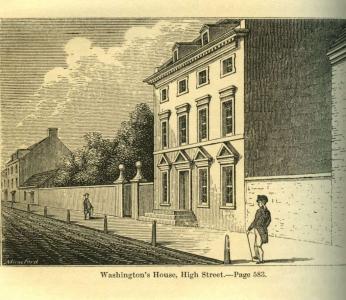
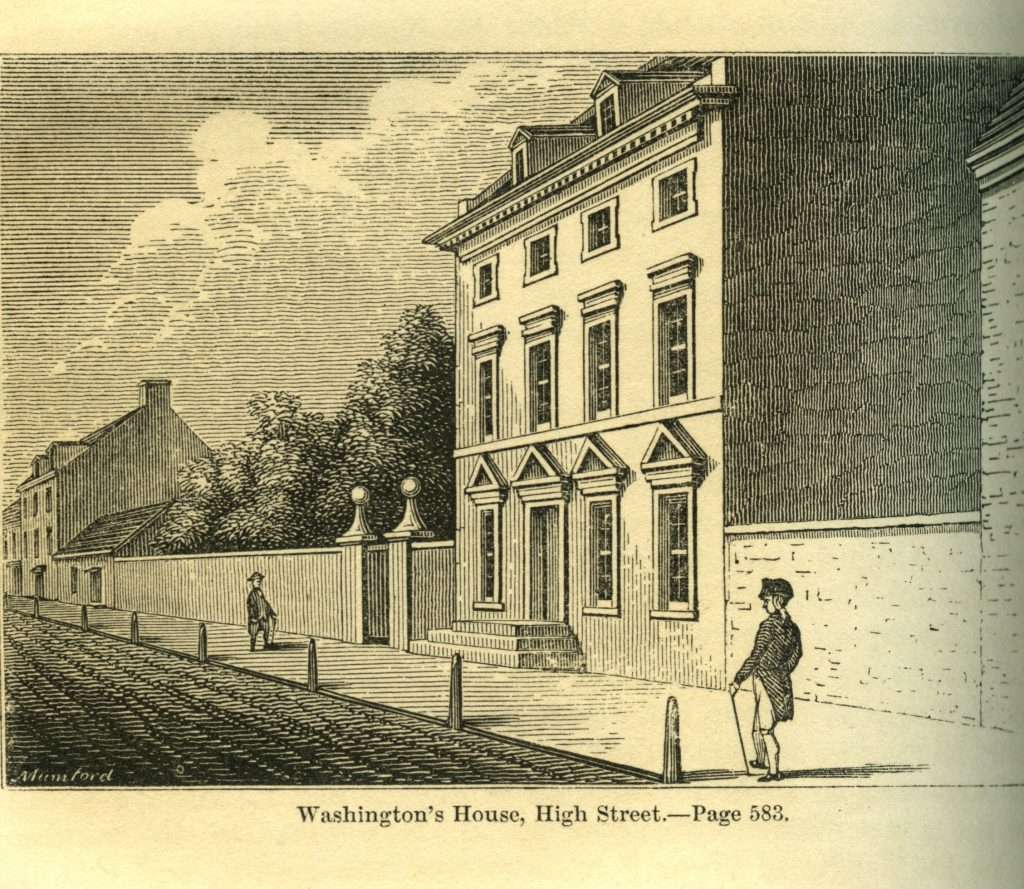
![Portrait of Eliza Parke Custis Law with arms crossed, holding a sunhat [Source: Mount Vernon]](/sites/default/files/styles/embed/public/2024-05/Ona%20Judge%20-%20Eliza%20Parke%20Custis%20Law_0.jpg?itok=vyf_Zr11)
![Portrait of Eliza Parke Custis Law with arms crossed, holding a sunhat [Source: Mount Vernon]](/sites/default/files/2024-05/Ona%20Judge%20-%20Eliza%20Parke%20Custis%20Law_0.jpg)
![Newspaper advertisement for Ona Judge, runaway slave [Source: Encyclopedia Virginia]](/sites/default/files/styles/embed/public/2024-05/Ona%20Judge%20-%20Runaway%20Ad.jpg?h=31e7fd8c&itok=XnViO9TC)
![Newspaper advertisement for Ona Judge, runaway slave [Source: Encyclopedia Virginia]](/sites/default/files/2024-05/Ona%20Judge%20-%20Runaway%20Ad.jpg)
![Drawing of Market Square in Portsmouth, New Hampshire as it looked in 1853. Large buildings frame the background and wagons, cows, and people fill the street. [Source: The White House Historical Association]](/sites/default/files/styles/embed/public/2024-05/Ona%20Judge%20-%20Portsmouth%20Market%20Square.jpg?itok=Wbw1n3O9)
![Drawing of Market Square in Portsmouth, New Hampshire as it looked in 1853. Large buildings frame the background and wagons, cows, and people fill the street. [Source: The White House Historical Association]](/sites/default/files/2024-05/Ona%20Judge%20-%20Portsmouth%20Market%20Square.jpg)
![Photo of a large church building with columns. [Source: The White House Historical Association]](/sites/default/files/styles/embed/public/2024-05/Ona%20Judge%20-%20South%20Church.jpg?itok=78YQFS5b)
![Photo of a large church building with columns. [Source: The White House Historical Association]](/sites/default/files/2024-05/Ona%20Judge%20-%20South%20Church.jpg)
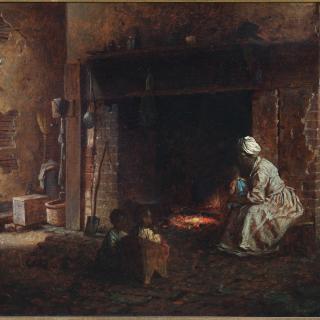
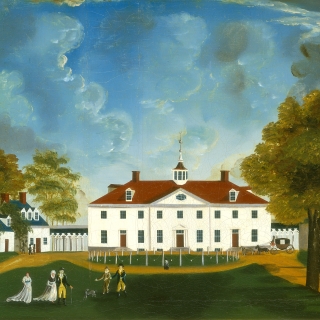
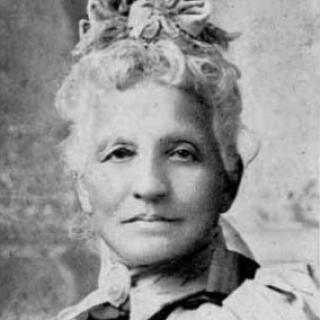
![Sketch of the mythical fuan by Pearson Scott Foresman. [Source: Wikipedia]](/sites/default/files/styles/crop_320x320/public/2023-10/Goatman_Wikipedia_Faun_2_%28PSF%29.png?h=64a074ff&itok=C9Qh-PE1)











